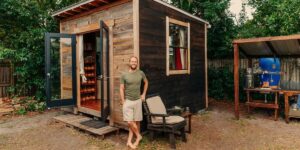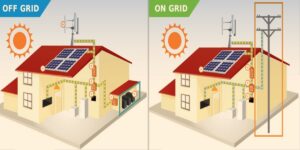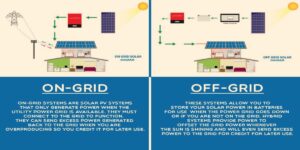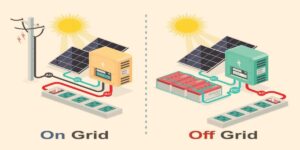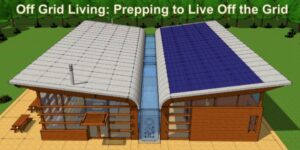How to Live Off-Grid: A Complete Guide to Sustainable Living
Did you know that over 3 million Americans live off-grid full-time? Whether it’s for environmental reasons, cost savings, or a desire for independence, more people are choosing to disconnect from modern utilities and embrace a self-sufficient lifestyle.
In this article, we’ll walk you through everything you need to know about how to live off-grid, including setting up sustainable systems, legal considerations, and real-life experiences from those who’ve done it successfully.
Why People Choose to Live Off-Grid
The decision to live off-grid often stems from a desire to:
- Reduce reliance on public utilities
- Lower living expenses
- Minimize environmental impact
- Gain personal freedom and privacy
However, transitioning to an off-grid lifestyle requires careful planning and a shift in mindset. Unlike traditional housing, off-grid homes rely heavily on renewable energy, water conservation, and sustainable food production.
How to Live Off-Grid: A Step-by-Step Guide
If you’re serious about learning how to live off-grid, follow these essential steps:
1. Define Your Goals and Budget
Ask yourself: What do you hope to achieve by going off-grid? Is it financial independence, sustainability, or solitude?
Create a realistic budget that includes land purchase, construction, equipment, and ongoing maintenance costs.
2. Find the Right Land
- Look for rural areas with minimal zoning restrictions
- Ensure access to clean water sources
- Consider solar exposure and terrain for building
3. Set Up Power Systems
Most off-gridders use solar panels, wind turbines, or micro-hydro generators. Here’s a breakdown of each:
- Solar Panels: Best for sunny regions; can be paired with battery storage
- Wind Turbines: Ideal for windy climates; require taller towers
- Micro-Hydro: Efficient if you have running water nearby
4. Water Collection and Filtration
Off-grid water solutions include:
- Rainwater harvesting systems
- Well drilling
- Spring water collection
- Water filtration units (like Berkey filters)
5. Waste Management
Traditional sewage systems aren’t always viable. Consider:
- Composting toilets
- Greywater recycling
- Septic tanks (if permitted)
6. Food Production
Growing your own food is a key part of off-grid living:
- Start a vegetable garden
- Raise chickens or goats for eggs and milk
- Preserve food using dehydrators, root cellars, or canning
Best Practices for a Successful Off-Grid Lifestyle
Living off-grid doesn’t mean sacrificing comfort. Follow these best practices:
- Invest in quality gear: Durable solar panels, rain barrels, and backup generators pay off long-term.
- Build a community: Connect with other off-gridders online or locally for support and shared knowledge.
- Stay flexible: Be ready to adapt your plans based on weather, resources, and new technologies.
- Keep skills sharp: Learn carpentry, plumbing, gardening, and first aid.
Common Mistakes When Learning How to Live Off-Grid
Avoid these pitfalls to ensure a smoother transition:
- Underestimating costs: Many underestimate initial setup costs—budget at least $50,000+.
- Ignoring permits: Check local regulations before building structures or installing power systems.
- Overbuilding: Start small and expand as needed rather than investing heavily upfront.
- Not testing systems: Test your water and power systems before fully moving in.
Expert Insights and Real-Life Case Studies
We interviewed several off-gridders to learn from their experiences:
“We moved to a homestead in Montana five years ago. Our biggest lesson? Always build a greenhouse—even in cold climates.”
– Sarah and Tom, Homesteaders
According to data from the U.S. Department of Energy, off-grid households typically reduce energy consumption by 40% compared to grid-connected homes.
Frequently Asked Questions About Living Off-Grid
Can I legally live off-grid?
Yes, but it depends on local zoning laws and building codes. Always check with your county government before starting your project.
Do I need special permission to install solar panels?
In most cases, yes. You may need permits from your local utility company or municipality.
How much does it cost to go off-grid?
Initial costs range from $20,000 to $100,000 depending on location, size, and technology used.
Is off-grid living safe?
As long as you plan carefully and prepare for emergencies, off-grid living can be just as safe—if not safer—than traditional lifestyles.
Can I work remotely while living off-grid?
Absolutely! With satellite internet and mobile hotspots, many digital nomads combine remote work with off-grid life.
Want to explore more? Check out our guides on solar power basics and homesteading tips.
For more information, visit the U.S. Department of Energy or read case studies on Off Grid Living Network.
Final Thoughts: Embrace the Off-Grid Lifestyle
Learning how to live off-grid is more than just a trend—it’s a lifestyle choice that offers freedom, sustainability, and resilience. By following the steps outlined above and avoiding common mistakes, you can begin your journey toward self-sufficiency.
Whether you’re looking to downsize, reduce your carbon footprint, or simply escape the hustle of city life, off-grid living might be the perfect fit for you.
Have questions or want to share your experience? Leave a comment below!

